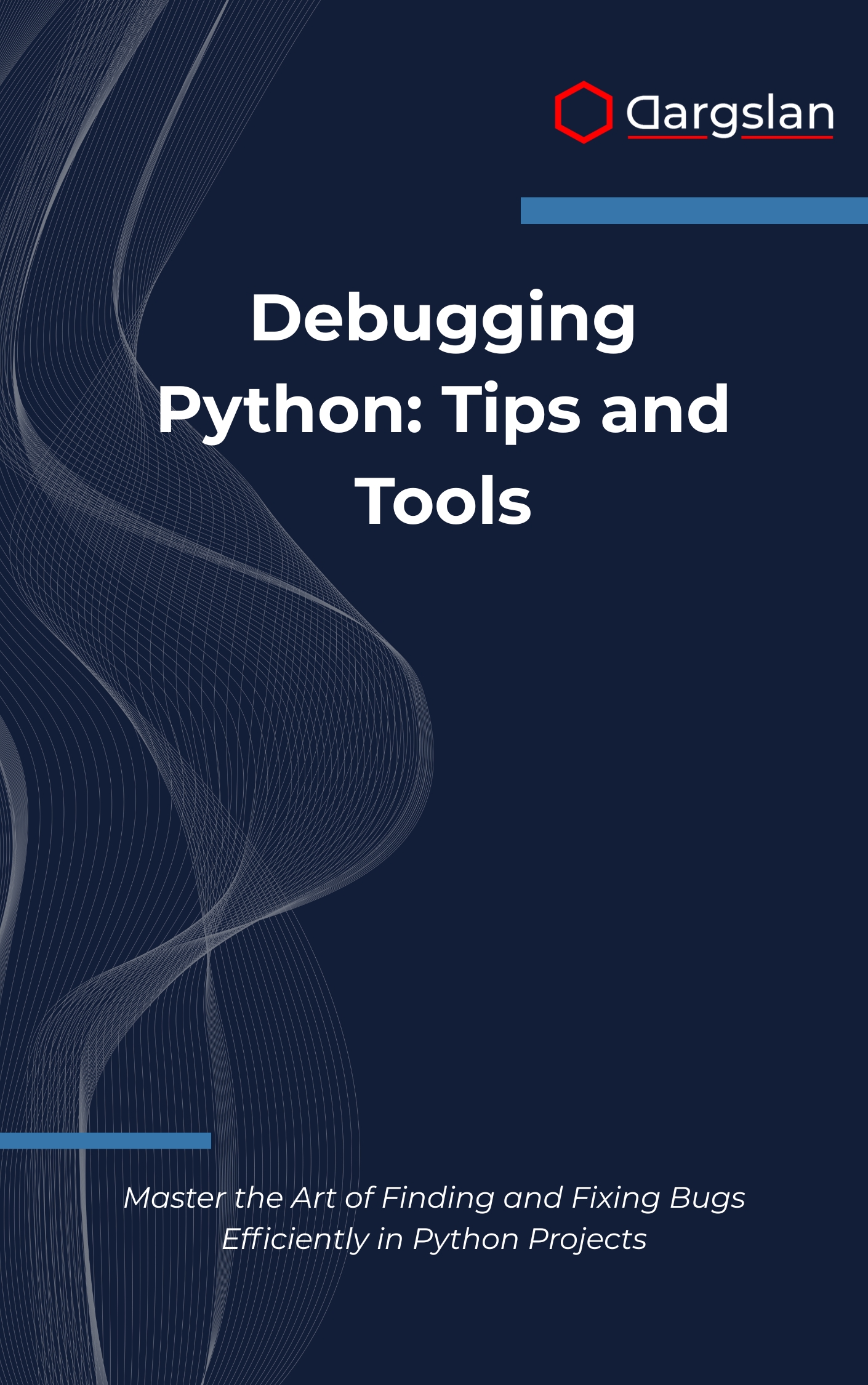Debugging Python: Tips and Tools
Python Debugging and Error Handling,Fix Python bugs efficiently with systematic debugging and error-handling techniques.

Every Python developer has faced the sinking feeling of a failing test, a cryptic stack trace, or a bug that vanishes the moment you add a print statement. What separates pros from the rest is a systematic debugging approach—one that’s fast, confident, and repeatable.
This practical guide turns debugging from a time sink into a strategic advantage. You’ll learn to investigate issues with purpose, choose the right tools, and build workflows that keep your projects moving forward.
Master the Art of Finding and Fixing Bugs Efficiently in Python Projects
Overview
Debugging Python: Tips and Tools is an IT book, programming guide, and technical book designed to help you Master the Art of Finding and Fixing Bugs Efficiently in Python Projects. It gives you a step-by-step system for understanding Python error messages and stack traces, improving pdb debugger usage and commands, applying strategic print debugging techniques, and configuring the Python logging module for clarity and signal over noise. You’ll also learn to harness IDE debugging tools and features that speed up diagnosis and reduce guesswork.
Beyond the fundamentals, the book dives into unit test debugging with pytest and unittest, performance profiling and optimization, multithreading and asyncio debugging, and memory leak detection and analysis. It also covers production debugging strategies, remote debugging techniques, custom debugging tool development, debugging workflow establishment, third-party debugging libraries, and distributed system debugging so you can confidently troubleshoot locally, in CI, and in live environments.
Who This Book Is For
- New Python developers who want to stop guessing and start reading stack traces, using pdb, and instrumenting code with logging to identify issues quickly.
- Intermediate engineers seeking to master pytest-driven test failures, profile performance bottlenecks, and debug asyncio and multithreaded behaviors with reliable, repeatable methods.
- Team leads and senior developers who need production-ready strategies, remote debugging setups, and scalable workflows that raise the debugging maturity of an entire team.
Key Lessons and Takeaways
- Build a clear, step-by-step debugging workflow—triage, reproduce, isolate, verify—that turns vague symptoms into actionable hypotheses and measurable fixes.
- Use the right tool at the right time: deftly switch between print statements, structured logging, pdb breakpoints, and IDE watch expressions to minimize time-to-fix.
- Diagnose complex environments confidently by tracing async tasks, threading interactions, memory usage, and performance profiles, then validate fixes with targeted tests.
Why You’ll Love This Book
This guide is all about real-world application. You’ll find clear explanations paired with hands-on examples, from decoding exception hierarchies to setting logging levels that actually help during incidents. Chapters are short, focused, and cumulative, so you build momentum as you go. Case studies mirror issues you’ll meet in APIs, data pipelines, and web backends, while checklists and references make it easy to apply lessons on the job. Whether you prefer terminal-based workflows or full-featured IDEs, the techniques are practical, modern, and battle-tested.
How to Get the Most Out of It
- Start with the fundamentals: error types, stack traces, and structured logging. Then progress to pdb and IDE breakpoints before tackling async, threading, and performance topics to cement a strong foundation.
- Apply each concept immediately to a current task. Add logging to clarify assumptions, set breakpoints where data changes, and create minimal reproductions to isolate causes and avoid chasing symptoms.
- Build mini-projects that stress specific skills: a flaky unit test for pytest debugging, a CPU-bound script for profiling, an asyncio service for concurrency issues, and a small service with remote debugging enabled.
Inside the Skills You’ll Master
Interpret Python error messages and stack traces like a pro, including chained exceptions and context that reveal true root causes. Configure the logging module to deliver structured, searchable output across environments, and learn when to escalate log levels or attach context to events.
Get comfortable with pdb debugger usage and commands—step, next, continue, breakpoints, watch variables—and combine them with IDE debugging tools and features such as conditional breakpoints, variable views, and inline evaluation. You’ll also learn strategic print debugging techniques that complement breakpoints without creating noise.
Strengthen your testing feedback loop by mastering unit test debugging with pytest and unittest. Use parametrized tests to reproduce edge cases, leverage markers to isolate flaky behavior, and capture logs and output for faster diagnosis.
Tackle performance profiling and optimization with cProfile, timeit, and sampling profilers. Distinguish CPU-bound from I/O-bound issues, identify hot paths, and prioritize fixes that deliver measurable impact without premature optimization.
Confidently approach multithreading and asyncio debugging by visualizing task lifecycles, tracking event loops, and avoiding common pitfalls like shared-state mutations and blocking calls. For memory leak detection and analysis, you’ll use tools that surface reference cycles and object growth over time, then confirm fixes with regression tests.
When the stakes are highest, apply production debugging strategies: meaningful logs, feature flags, safe fallbacks, and traceable error handling. You’ll practice remote debugging techniques, instrument services for observability, and build robust incident workflows with clear rollback and verification steps.
Round it out with custom debugging tool development, debugging workflow establishment that scales to teams, smart use of third-party debugging libraries, and techniques for distributed system debugging where issues span services and networks.
Practical Appendices You’ll Reuse Daily
Quick-reference materials keep you productive under pressure: an error cheat sheet that maps symptoms to likely causes, a concise pdb command reference, a debugging workflow checklist for calm incident response, and a curated list of Python tools that save time.
Get Your Copy
Stop letting bugs derail your roadmap. Build a confident, professional debugging toolkit you can rely on in local development, CI, and production.




